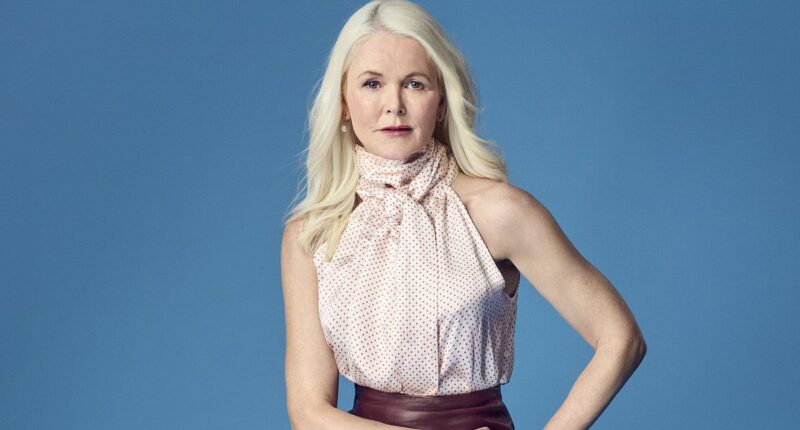Back in the Middle Ages, alchemists believed that if they could only find the mythical Philosopher’s Stone, they could use it to produce the elixir of life and live forever.
Today, not much has changed. Billionaires like Amazon’s Jeff Bezos hire the world’s most brilliant scientists to find out how to live for as long as possible, while longevity clinics are opening up in the planet’s richest capital cities to cater to the one per cent.
London alone boasts several such clinics. For example, the Hooke in Mayfair offers top-tier membership at £54,000 per year, while the slightly more accessible Solice, just around the corner, offers annual membership at just under £10,000.
You would be forgiven for thinking that when it comes to longevity it’s a rich man’s (or
woman’s) world. But I have cheering news. It doesn’t matter if you can’t afford any of the above. Because I’ve spent years reading the research of all these top scientists and I am here to tell you that all of us can adopt their methods and advice for very little money.
Yesterday in the Daily Mail I told how I discovered at the age of 61 that my biological age – the age that defines how well my body is ageing – is just 20. Yes, I’m 61 on the outside but 20 inside!

Sandra Parson turned around her health in her early 40s – and reversed the ageing clock – by changing the way she ate, moved and rested
Despite spending much of my adulthood smoking, stressed, eating ready meals and doing no exercise at all, I completely turned around my health in my early 40s – and reversed the ageing clock – using a three-pronged approach backed by science.
By changing the way I ate, moved and rested, I revolutionised my life and gave myself the best possible chance of living to a ripe and healthy old age. And you can too.
EAT LESS
One of the first experts I turned to was Dr Valter Longo, professor of gerontology and biological sciences and director of the University of Southern California Longevity Institute in LA. He believes the key to anti-ageing lies in fasting.
When we restrict what we eat, and therefore limit the energy coming into our body, we force our cells to eat parts of themselves in order to survive – but only the parts that no longer function well.
The scientific word for this is autophagy. It comes from Greek: autos (self) and phagomai (to eat) – literally, self eating.
Then, when we eat again, the body goes into overdrive, replacing, repairing and renewing cells, which in turn means we become healthier, stronger – and, yes, younger.
Caloric restriction – cutting back what we eat – has the same effect. Dr Longo has studied caloric restriction for more than three decades and is clear that, with the right nutrition and fasting, we can optimise our chances of staying fully functional into our 90s, 100s and beyond. The brilliant news is you don’t have to fast for long or cut back by much to get the desired effects.
The most comprehensive and extensive study on caloric restriction shows that you only have to cut your calories by 10 to 12 per cent to drastically reduce your biological age – and improve everything from your cardio-vascular health to cutting your risk of diabetes and dementia.
For most of us that’s not much at all: the rough equivalent of three chocolate chip cookies or a small portion of McDonald’s fries.

Three to four hours of moderate exercise a week – cycling, rowing, weight training, whatever you like most – is likely to reduce a woman’s risk of breast cancer by 30 to 40 per cent, and both men and women’s risk of colon cancer by 40 to 50 per cent
HOW DO WE DO IT?
1. Eat more fibre
A high-fibre diet is an effortlessly effective way of cutting your calories. Put simply, eating more plants means you feel fuller for longer and so you eat less.
In fact, fibre offers many of the same health benefits as caloric restriction.
It is the most anti-inflammatory food there is, improving gut and heart health, blood sugar control and immune function and lowering ‘bad’ cholesterol and the risk of several cancers, including colorectal, breast, pancreatic and bladder cancer, and helping with weight management.
A review of more than a dozen international studies showed that increasing fibre by just 14g a day leads to weight loss of 1.9kg (4lb) in less than four months – without changing anything else that you normally eat.
See the box, below, for the top 20 highest fibre foods – and eat more of them!
2. Practise a very manageable form of Time Restricted Eating (TRE)
A mild form of fasting, TRE involves increasing your overnight no-food window from an average 8 to 10 hours to 12. You can do this by either eating your last meal of the day earlier or delaying your breakfast, or both.
Obviously, you can’t do this every day – you need to be able to have a late dinner here and there, or go to a party when you want to. But on ordinary days at home, it simply means having no snacks or treats after your evening meal.
For me, I find what works best is a 14-hour window: no food after 8.30 or 9pm, and none the next day before 10.30 or 11am, which is when I have breakfast (at my desk, usually).
Note, I’m not skipping breakfast altogether – there’s increasing evidence that doing so is bad for you – just eating it later than the usual time.
MOVE MORE
‘WHEN it comes to exercise, what everyone wants to know is, “how little can I do?”,’ says Professor Bill Kraus, a cardiologist at Duke University in North Carolina.
And the answer is… to reduce your chances of dying early by almost a third (30 per cent), you only have to walk a mile every day (that’s around 2,000 steps).
There. It doesn’t matter if you were rubbish at sport at school, always got picked last for the team, can’t run to catch a bus… whatever. You can walk one mile. Though you do have to walk briskly. It can’t be an indolent stroll.
The reason this works mathematically is that both US and UK national guidelines recommend 150 minutes of moderate intensity exercise a week, which in walking terms ‘is about 3 miles an hour’.
‘Every mile is around 2,000 steps,’ says Dr Kraus. ‘So if we are telling people to do two and a half hours of moderate intensity physical activity a week at 3 miles an hour, that calculates out to 7 miles a week or 2,000 steps a day.’
These need to be in addition to the steps you take in normal daily life, by the way (which add up to about another 5,000 on average). It does have to be an intentional ‘extra’ walk!
Of course, more exercise equates to greater benefits still.
According to one estimate, three to four hours of moderate exercise a week – cycling, rowing, weight training, whatever you like most – is likely to reduce a woman’s risk of breast cancer by 30 to 40 per cent, and both men and women’s risk of colon cancer by 40 to 50 per cent.
Exercise is probably the single best thing you can do to keep your brain healthy, too.
Studies using MRI scans show that aerobic exercise can reverse age-related shrinkage in the brain’s memory centres, as well as improve blood flow in the brain and help preserve brain tissue.
In fact, along with cardio and resistance exercise (any form of weight-bearing exercise) there is a third form of workout we should all be doing called ‘neuromotor exercise’.
Neuromotor exercise is anything that requires you to move while also having to think, and it’s extremely good for our brains. Yoga, Pilates and tai chi come under this umbrella, as do racket sports – tennis, padel, pickleball, badminton, squash – and martial arts.
Dance is also neuromotor exercise and according to a recent study the one that works your brain the most.
(If you doubt this, try going to dance classes to learn a complicated series of steps and see how well you get on.)
- If you want to go one further, try cognitive training while exercising. Scientists have proved that moving the body while challenging the brain is an excellent way to grow new connections within the brain and supercharge memory.
- Try this exercise. Walk across the room and ask someone to time you.
- Now ask them to time you again, but this time while you count backwards from 100 in threes (or if you hate numbers, while you say out loud as many different words as you can think of beginning with L).
- Not so easy is it? You will find that at the very least you walked more slowly over the same distance.
- At worst you may have lost your balance – so take care with this exercise.
REST DEEPLY
More than half of UK adults (51 per cent) aren’t getting enough sleep, with a third struggling with insomnia and 74 per cent reporting a decline in the quality of sleep over the past year.
The average night’s sleep in the UK is six hours 49 minutes – and the consequences of regularly getting less than seven hours sleep are enough to give anyone nightmares.
More than 20 large-scale studies, tracking millions of people over many years, have all reported the same thing: the shorter someone sleeps, the shorter their life.
So before we go any further, let me give you the good news. It is entirely possible to get your sleep back on track, using no medication whatsoever, and reverse the problems caused by a lack of good rest.
How to re-set your sleep? Dr Michael Grandner, who runs the Sleep Clinic at the University of Arizona, uses two techniques from CBT (cognitive behavioural therapy), which he says are ‘shockingly successful, even if you’ve had insomnia for decades’.
1. The first is to teach your brain that when you go to bed, only one thing happens, which is that you fall asleep.
If your brain knows that getting into bed could mean any one of all sorts of other things – scrolling through social media, doing some online shopping, watching a film, checking emails, listening to a podcast – then the bed loses its ability to create a sleep response.
Start by not going to bed until you feel sleepy. Dr Grandner likens this to not forcing yourself to eat if you’re not hungry.
Just as it makes no sense to sit down at the dining table waiting to get hungry, so it is pointless to lie in bed waiting to feel sleepy. All you will do is make yourself stressed.
It doesn’t matter how long it takes: you may end up going to bed two or three hours later than you would do normally. The point is, if you only get into bed when you are ready to sleep, you are much more likely to fall asleep and stay asleep.
And don’t worry if that means you are getting less sleep than you think you need. A few (or even many) nights of less than the ideal amount of sleep really won’t matter in the long run. Similarly, if you wake in the middle of the night and after 25 to 30 minutes don’t fall back to sleep, get up and leave your bed.
Do something relaxing but not stimulating and don’t go back until you feel really sleepy. ‘The goal is bed = sleep,’ says Dr Grandner. ‘This alone will fix many insomnia problems for a lot of people.’
2 The other technique is sleep restriction therapy. The idea here is that you allow people to sleep a little and once they’ve managed that, you allow them to sleep a little more, building up very gradually until they can sleep the whole night through.
For example, if you spend eight hours in bed but only manage to sleep for six, then six hours becomes your baseline.
Instead of going to bed eight hours before you have to get up, delay your bedtime by two hours, meaning you only have those six hours in bed in total. The question then is, can you sleep for all of those six hours?
The answer is probably not, at least at first, explains Dr Grandner. But if you stick to the process – only going to bed six hours before you have to get up – then eventually you are so tired that you do manage to sleep for the whole six hours.
‘And now,’ continues Dr Grandner, ‘you’ve got a success.’
The next step is to go to bed six hours and 15 minutes before you have to get up.
And if you manage to sleep for that extra 15 minutes as well, then you add another 15 minutes on to that.
‘And you slowly increase the time until they can’t fill it anymore and that’s how much sleep they can regularly and reliably get,’ he says.
The key is to get up at your normal time, no matter how late it was when you went to sleep!

Fibre provider: Pears
20 of the best fibre providers
(Listed with highest-fibre food first and based on average serving size)
1 avocado 10g
100g rolled oats, raw 10g cooked 1.7g
150g punnet of raspberries 8g
120g (= half a 400g can, drained) butter beans 8g
120g (= half a 400g can, drained) chickpeas 8g
100g lentils, cooked 7.9g
1 medium (175g) jacket potato 5.8g
100g peas boiled 5.5g
1 medium pear, skin on 5.5g
100g broad beans, boiled 5.4g
200g sweet potato, baked, without skin ..5g
1 medium apple, skin on 4.4g
Wholewheat English muffin (66g) 4.4g
400g tin chopped tomatoes 4g
Half a tin (207g) Heinz baked beans 3.9g
175g Swiss chard, cooked 3.7g
100g wholewheat pasta 3.6g
150g cauliflower (about one quarter), cooked 3.5g
1 slice wholemeal bread 3.5g
100g new potatoes, skin on 3.3g
Lunch on the go or at work
It’s still not easy to find high-fibre options when you are out but here are four I like:

From Pret: Hummus and Falafel Mezze Salad has 11.8g fibre.
Avo and Herb Wrap has 6.7g fibre, and could be followed with Dark Chocolate Salted Almonds with 3.5g fibre.

From M&S: Roasted Butternut & Goat’s Cheese Salad with giant couscous, lentils and balsamic dressing has 9.4g fibre.
Super Nutty Wholefood Salad with quinoa, edamame bean, soybean, almonds, peanuts and pistachios with soy and ginger dressing – a total of 9.4g fibre.
Adapted from Age Less by Sandra Parsons (New River Books, £14.99), to be published 5th June. © Sandra Parsons 2025. Find Sandra Parsons on Instagram @AgelessTheMethod

















